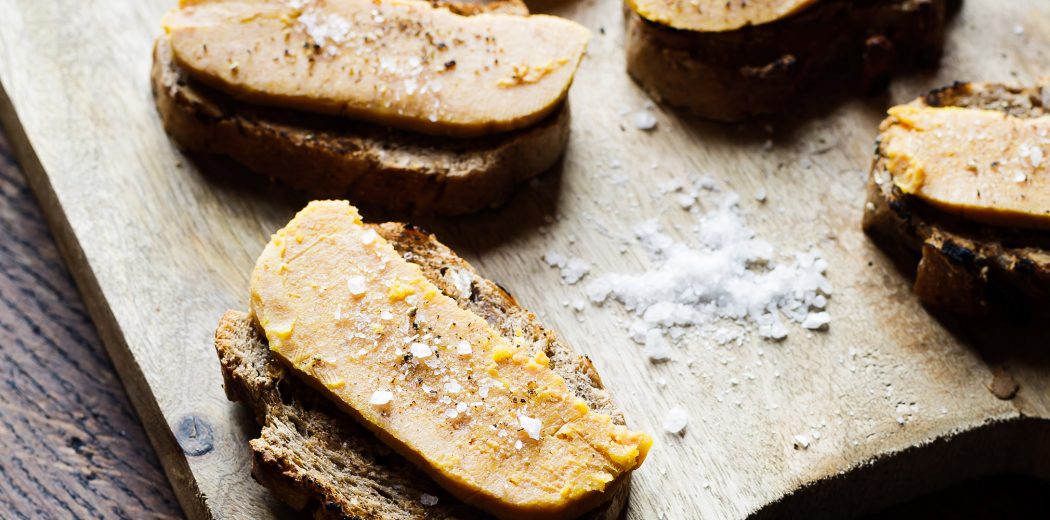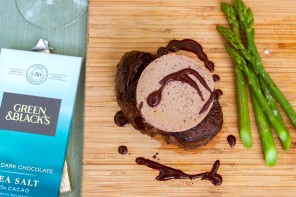Foie Gras Terrine
Ingredients
- 1 (1-pound) piece duck liver , fresh
- 1 teaspoon table salt , plus more if needed
- Olive oil
- Flaky sea salt and freshly cracked black pepper
- 1 loaf raisin-walnut bread
Wine Pairing
- red blend
Instructions
- Choose a container that will create the final form of the foie—a small loaf pan, rectangular mold, or small bowl will do. Line it with plastic wrap.
- Cut the duck liver into large pieces. Remove any prominent veins. Put the pieces of liver in a saucepan and cook over medium-high heat, stirring, until all the pieces of liver have melted. You want to keep the foie at a just-warm temperature; if you see that the melting foie is getting too hot (steaming or bubbling), remove it from the heat and stir before putting it back on the heat. This process takes about 3 minutes. Stir in the table salt, taste, and adjust the seasoning.
- Pour the foie into a fine-mesh sieve set over a bowl and push it through with a whisk, stirring and scraping until the liquid has passed through and any veins remain behind. Discard the solids in the sieve.
- Transfer the strained foie to the prepared mold. Cover tightly and refrigerate until completely cool, at least a few hours.
- When ready to serve, preheat the broiler.
- Slice the raisin bread into thin slices, about ½ inch (1.5 cm) thick, lay them on a baking sheet, and drizzle with olive oil. Toast under the broiler until crunchy. Transfer to a serving platter.
- Slice the foie into thin pieces (less than ¼ inch/6 mm thick) and place a slice on each piece of bread. Sprinkle with flaky sea salt and cracked black pepper. Serve while still warm. Any leftover foie can be wrapped well and frozen for up to three months and defrosted to serve when desired.




